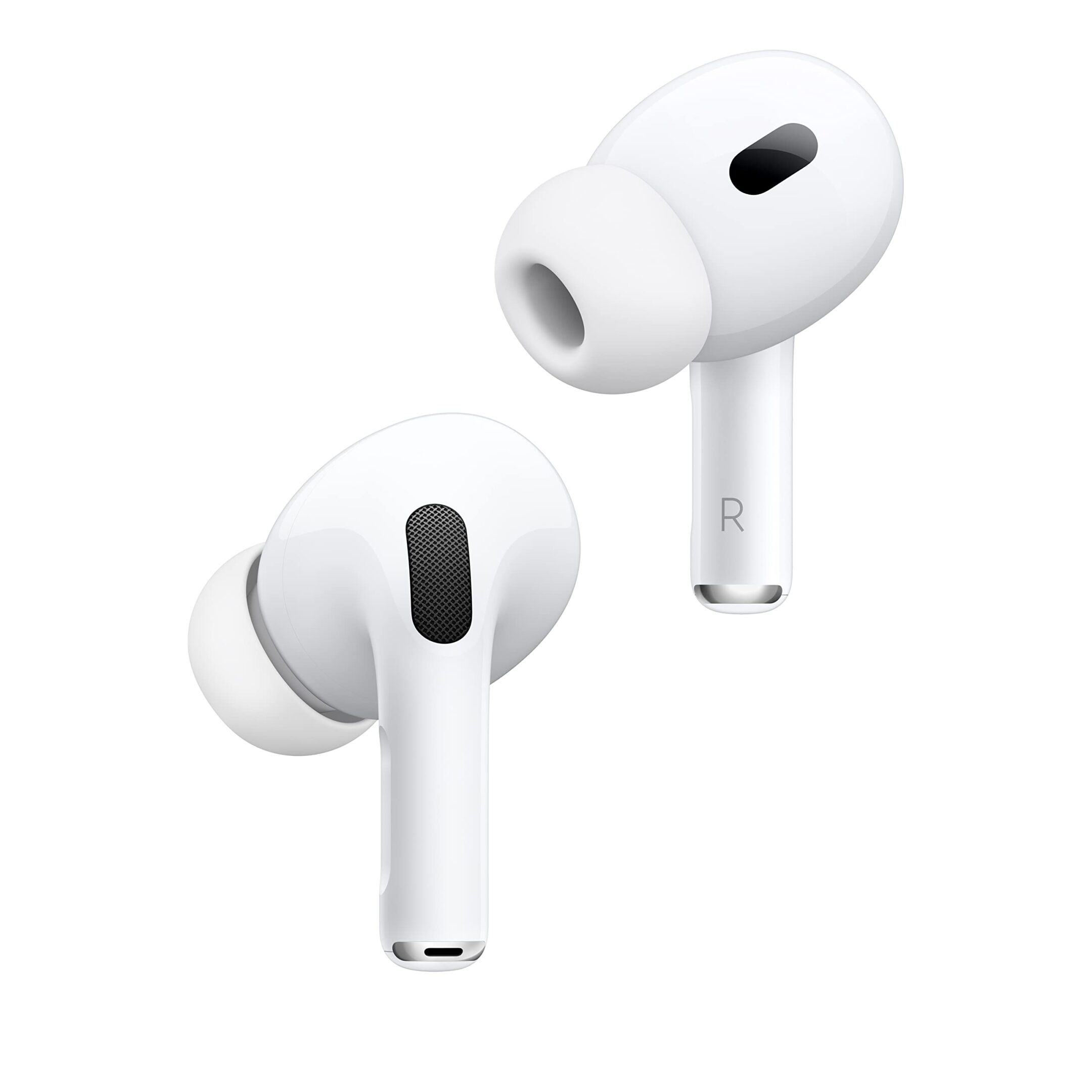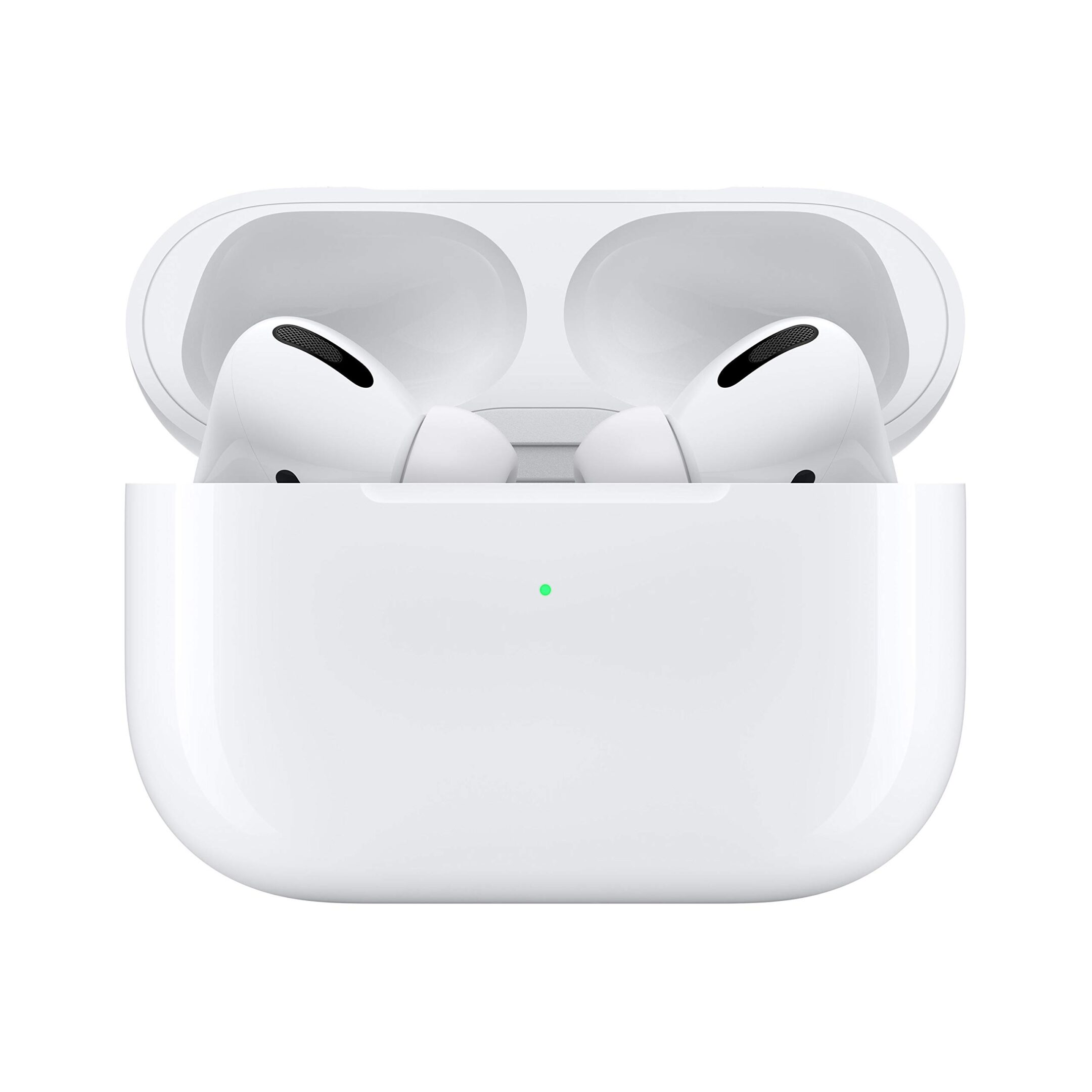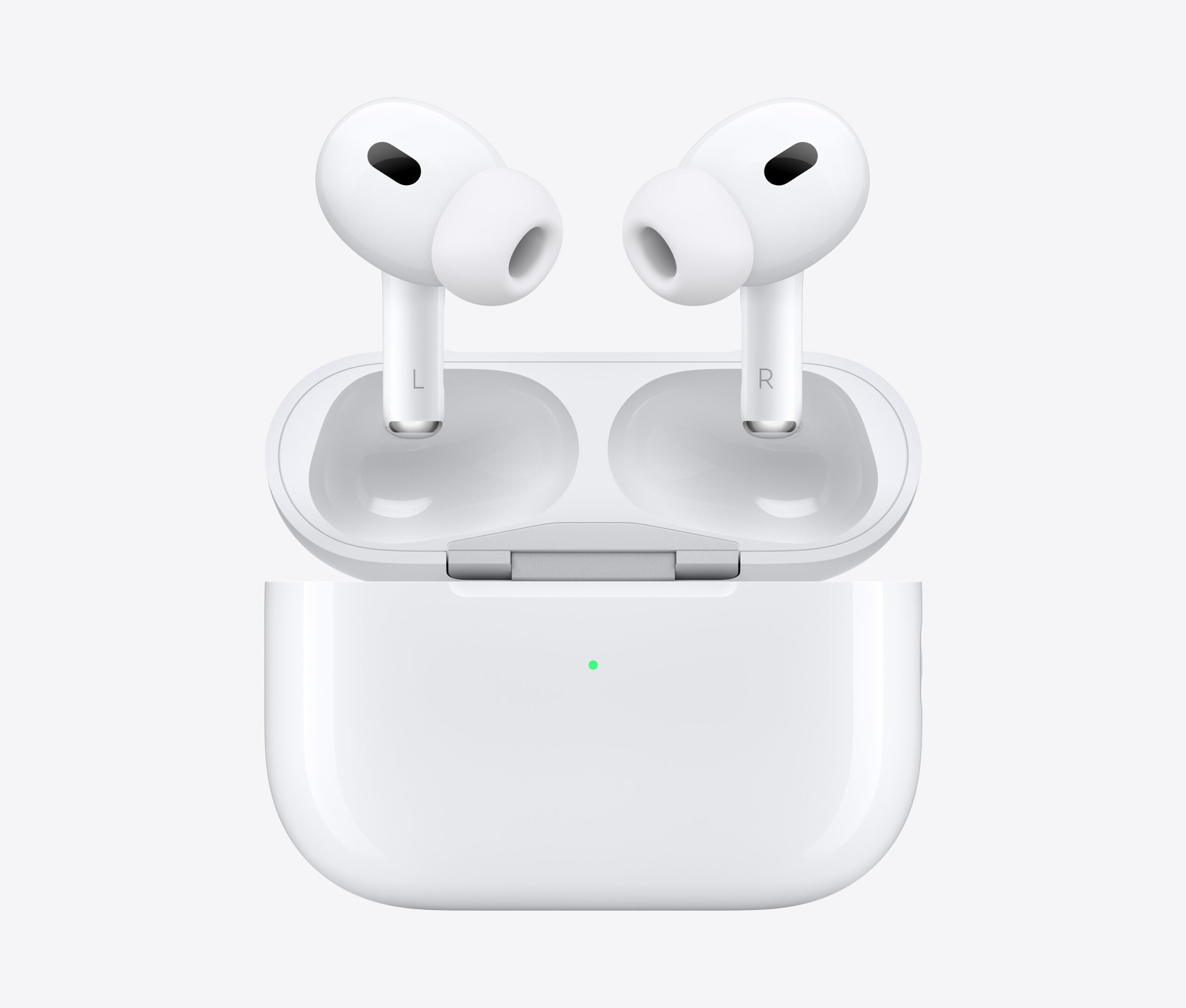Apple’s latest wireless earbuds offer more choices than ever for consumers. The AirPods Pro 2 continue to sit at the premium end of Apple’s audio lineup, while the new AirPods 4 come in two versions – a standard model and one with Active Noise Cancellation. The AirPods 4 with ANC now offer many features previously exclusive to the Pro line at a lower price point, though the AirPods Pro 2 still block twice as much noise as their newer siblings.
Both the AirPods 4 and AirPods Pro 2 include important upgrades like wireless charging capabilities, USB-C compatibility, and improved sound quality over previous generations. The design differences remain significant – AirPods Pro 2 maintain their in-ear design with silicone tips while the AirPods 4 feature an open-ear design that some users prefer for comfort, though this affects noise isolation.
AirPods 4 vs AirPods Pro 2: A Feature-by-Feature Comparison

Design & Fit
The AirPods 4 and AirPods Pro 2 take very different approaches when it comes to design and fit. The AirPods 4 retain the classic open-ear style, which rests lightly in your ear without creating a seal. This is ideal for users who prefer a looser fit or dislike the pressure that can come with in-ear tips. They’re comfortable for all-day wear and convenient for casual listening, but don’t expect much isolation from outside noise.
On the flip side, the AirPods Pro 2 feature silicone tips that form a secure in-ear seal, blocking out a significant amount of ambient sound. This makes them perfect for noisy environments, commuting, or focused listening. Apple’s latest ear tip fit test ensures the best seal possible, and the adaptive transparency mode allows you to stay aware of your surroundings when you need to.
Sound Quality & Audio Features
When it comes to pure audio performance, the AirPods Pro 2 are a clear step up. They use Apple’s H2 chip to deliver rich, dynamic sound with deeper bass and improved clarity across the frequency range. You also get access to Adaptive EQ, which adjusts audio in real-time based on the shape of your ear for a more personalized experience.
The AirPods 4, meanwhile, come in two versions: a standard model and a new variant that includes Active Noise Cancellation. While the standard version provides improved audio quality over previous generations, it doesn’t compete with the Pro model in terms of detail or soundstage. The ANC version of the AirPods 4 is surprisingly capable, bringing more premium audio features to a mid-tier price point—but it still can’t match the depth and consistency of the Pro’s ANC system.
Spatial Audio
Both AirPods 4 and Pro 2 support Personalized Spatial Audio with dynamic head tracking, but the effect is more immersive with the Pro thanks to its superior driver setup and better ear seal. If you’re big into movies or spatial music mixes, the Pro’s edge is noticeable.
Active Noise Cancellation & Transparency Mode

AirPods Pro 2 remain the gold standard for noise cancellation in Apple’s lineup. Their ANC is powered by the H2 chip and dual microphones that dynamically adapt to your environment, reducing a wide range of background sounds with impressive precision. Whether you’re on a plane, in a coffee shop, or walking near traffic, the Pro 2 silences the chaos.
The AirPods 4 with ANC do a decent job for basic noise reduction, but they lack the adaptive capabilities and fine-tuning of the Pro. They’re great for cutting down on hums and low-frequency noise but aren’t as effective in unpredictable environments. Transparency mode also exists on both models, but again, the Pro version is more refined and natural sounding.
Battery Life & Charging
The AirPods Pro 2 offer up to 6 hours of listening time with ANC on and up to 30 hours with the case. MagSafe charging, Lightning, and USB-C options are available, and the case even includes a built-in speaker and U1 chip for Precision Finding via Find My.
AirPods 4 provide about 5 hours of listening on the standard model, or around 4 hours with ANC enabled. Their case pushes total usage time to roughly 30 hours, which is solid. However, the charging case is simpler, with fewer features compared to the Pro 2’s case.
Smart Features
Both models support “Hey Siri,” auto-switching between Apple devices, Audio Sharing, and in-ear detection. However, the Pro 2 gain the edge with Conversation Awareness and Adaptive Transparency. These features allow the earbuds to lower media volume and enhance voices when someone is speaking to you, making them more intuitive in real-world use.
Price & Value
Apple has positioned the AirPods 4 to hit a sweet spot in the market. The base model starts at $129, while the ANC version costs $179. That puts them well below the AirPods Pro 2, which retail for $249. However, spring sales are currently offering the Pro 2 for up to $80 off, bringing them into direct competition with the higher-end AirPods 4.
If you’re price-sensitive and don’t need top-tier ANC or in-ear tips, the standard AirPods 4 offer great value. If you’re okay spending a bit more—or snagging a deal—the Pro 2 deliver more features per dollar, especially when they’re discounted.
Which Should You Buy?
Here’s a comparison table to help you decide which AirPods model might be the best fit for your needs and budget:
| Feature | AirPods (3rd Gen – Released Oct 2021, Discontinued Sept 2024) | AirPods Pro (2nd Gen – Released Sept 2022) | AirPods (4th Gen – Released Sept 2024) | AirPods (4th Gen with ANC – Released Sept 2024) |
| Price (USD – Launch) | $179 (Original), $169 (Later with Lightning Case) | $249 | $129 | $179 |
| Design | Contoured fit, shorter stem, Force Sensor | In-ear with silicone tips (4 sizes), Force Sensor | Universal fit, shorter stem, Force Sensor | Universal fit, shorter stem, Force Sensor |
| Active Noise Cancellation (ANC) | No | Yes | No | Yes |
| Transparency Mode | No | Yes | Yes | Yes |
| Adaptive Audio | No | Yes | Yes | Yes |
| Conversation Awareness | No | Yes | Yes | Yes |
| Spatial Audio | Yes, with dynamic head tracking | Yes, Personalized with dynamic head tracking | Yes, with dynamic head tracking | Yes, with dynamic head tracking |
| Sound Quality | Improved over previous gen | Enhanced, richer bass, clearer highs | Improved over previous gens | Improved over previous gens |
| Chip | H1 | H2 | H2 | H2 |
| Water & Sweat Resistance | Earbuds & Case (IPX4) | Earbuds & Case (IPX4) | Earbuds & Case (IP54) | Earbuds & Case (IP54) |
| Battery Life (Earbuds) | Up to 6 hours listening | Up to 6 hours listening (with ANC/Transparency off) | Up to 6 hours listening | Up to 5 hours listening (with ANC/Transparency on) |
| Battery Life (with Case) | Up to 30 hours listening | Up to 30 hours listening | Up to 24 hours listening | Up to 24 hours listening |
| Charging Case | Lightning or MagSafe (select models) | MagSafe (USB-C on later revision) | USB-C | USB-C |
| Controls | Force Sensor (single/double/triple press) | Force Sensor (single/double/triple press, swipe for volume) | Force Sensor (single/double/triple press) | Force Sensor (single/double/triple press) |
| Microphone | Acoustic mesh for wind noise reduction | Improved noise cancellation for calls | Improved | Improved |
| Skin-detect Sensor | Yes | Yes | Yes | Yes |
| Find My Support | Yes, with proximity view in Find My app | Yes, Precision Finding with U1 chip | Yes, with proximity view in Find My app | Yes, with proximity view in Find My app |
| Low Distortion Driver & Custom Amplifier | No | Yes | No | No |
| Hearing Health Features (Coming Fall 2024 – AirPods Pro 2) | N/A | Conversation Boost, Personalized Volume, Hearing Test, Hearing Aid mode, Hearing Protection | N/A | N/A |
Which Should You Buy?
- Choose AirPods (4th Gen) if:
- Budget is your primary concern. At $129, they are the most affordable option.
- You want a comfortable, universal fit and don’t necessarily need in-ear seals or ANC.
- You need the latest basic AirPods features like Spatial Audio, Adaptive Audio, and Conversation Awareness.
- You prefer USB-C charging.
- Choose AirPods (4th Gen with ANC) if:
- You want Active Noise Cancellation and Transparency Mode but prefer the universal fit over in-ear tips.
- You’re looking for a balance of features and price at $179.
- You value Spatial Audio, Adaptive Audio, and Conversation Awareness with noise-canceling capabilities.
- You prefer USB-C charging.
- Choose AirPods Pro (2nd Gen) if:
- Premium audio quality and the best noise cancellation are your top priorities.
- You prefer the secure and customizable fit of in-ear silicone tips.
- You want advanced features like Personalized Spatial Audio, swipe controls for volume, and the upcoming hearing health features.
- You are invested in the Apple ecosystem and want the most feature-rich experience.
- You prefer MagSafe charging (with USB-C port on the case in the latest revision).
Important Considerations:
- The AirPods (3rd Gen) were a good middle-ground option but have been discontinued as of September 2024 with the release of the 4th generation. You might still find them at some retailers, potentially at a discounted price, but the newer 4th generation models offer more features for a similar or lower price.
- Consider your primary use case. If you mostly use them in quiet environments, ANC might not be a necessity. If you travel frequently or work in noisy places, ANC can be a game-changer.
- Think about fit and comfort. The universal fit of the standard AirPods works well for many, but others prefer the secure seal of in-ear tips.
- The AirPods Pro 2 are the most technologically advanced of the three, justifying their higher price point if you value their premium features.
It really comes down to how and where you use your earbuds.
- Choose AirPods Pro 2 if you want the best noise cancellation, superior sound quality, and more advanced smart features. They’re the best all-around option for travel, work, workouts, and immersive audio experiences.
- Choose AirPods 4 (ANC version) if you want solid noise cancellation in a more open and comfortable design, with many of the same software features at a lower price.
- Choose the standard AirPods 4 if you’re looking for the most budget-friendly, lightweight, and casual listening experience that still benefits from the latest Apple tech updates.
Right now, with aggressive spring sale pricing on both models, it’s a great time to buy—especially if you’re upgrading from an older generation. Just decide whether your priority is comfort and simplicity or premium features and audio immersion.
Key Takeaways
- AirPods 4 bring premium features like ANC to a more accessible price point while AirPods Pro 2 offer superior noise cancellation.
- All new AirPods models support wireless charging and USB-C connectivity for improved user convenience.
- The choice between in-ear (Pro) and open-ear (standard) designs affects both comfort and sound isolation performance.
Design and Features
Apple’s latest earbuds come with distinct design elements and advanced features that set them apart. The AirPods 4 and AirPods Pro 2 each offer unique benefits depending on what users value most.
Ergonomics and Build
The AirPods 4 feature an open-ear design without silicon tips, making them lighter and more comfortable for extended wear. Apple has refined the shape to fit more ears comfortably while maintaining the iconic stem design. They come in a more compact charging case than previous generations.
In contrast, the AirPods Pro 2 use an in-ear design with silicon ear tips in multiple sizes for a customizable fit. This creates a better seal for improved noise isolation.
Both models offer water resistance, making them suitable for workouts or light rain. The Pro model has slightly better protection against water and sweat.
For users who dislike the feeling of in-ear tips, the standard AirPods 4 provide greater comfort. Those seeking better sound isolation may prefer the Pro’s in-ear design.
Technological Advancements
The AirPods Pro 2 lead with the H2 chip, enabling superior Active Noise Cancellation and Adaptive Audio. They automatically adjust to your environment’s sound levels.
AirPods 4 now come in two versions – a standard model and one with Active Noise Cancellation. This brings a previously Pro-exclusive feature to a lower price point.
Both models include:
- Spatial Audio with dynamic head tracking
- Conversation Awareness that lowers volume when you speak
- Voice Isolation for clearer calls
- Transparency Mode to hear your surroundings
The sensors in both models enable touch controls, automatic ear detection, and the ability to summon Siri hands-free. Battery life is similar, though the Pro model offers slightly longer listening time with noise cancellation activated.
Connectivity and Compatibility
AirPods Pro 2 and AirPods 4 offer seamless wireless connectivity with various devices through Bluetooth technology. These earbuds provide different levels of integration depending on whether you use Apple products or other devices.
Integration with Apple Ecosystem
AirPods Pro 2 and AirPods 4 work best with Apple devices through their instant pairing feature. Users simply open the charging case near their iPhone, and a setup animation appears for quick connection. Once paired with an iPhone, AirPods automatically connect to other Apple devices signed in with the same Apple ID.
The AirPods Pro 2 supports Bluetooth 5.3 technology, providing improved connection stability and range. This allows for a more reliable experience when moving between rooms while staying connected.
Both models integrate with Apple’s Find My network, similar to AirTags. Users can locate their AirPods on a map or use Precision Finding to locate them when nearby.
iCloud syncing enables seamless switching between Apple devices. Users can start a call on their iPhone and continue on their Mac without manually reconnecting their AirPods.
Enhanced User Experience
AirPods Pro 2 and AirPods 4 with Active Noise Cancellation support advanced features when paired with devices running iOS 18, iPadOS 18, or macOS Sequoia. These include Adaptive Audio, which automatically adjusts noise control based on the environment.
For non-Apple devices, connection is still possible but requires manual steps. Users need to:
- Place AirPods in the case
- Double-tap the front of the AirPods 4 case (or press the noise control button on AirPods Max)
- Select the AirPods in the Bluetooth menu of the device
The new USB-C charging port on newer models improves compatibility with a wider range of charging accessories. This eliminates the need for separate Lightning cables when traveling with other USB-C devices.
AirPods Pro 2 includes a Hearing Aid feature designed for users 18 and older, making them more accessible to people with mild to moderate hearing loss.







